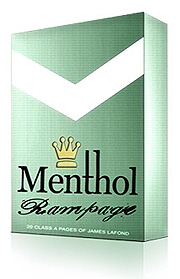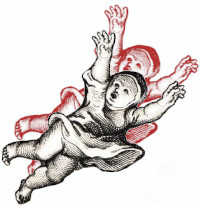2013, Abergle, The Palingenesis Project (Wermond and Wormond), UK, 176 pages, with excellent art work and brilliant introduction by Alex Kurtagic
The runner up quotes that were selected from this volume for the title, and were set aside in favor of the last and best, are:
“The oldest and strongest emotion of mankind”
“The dead and the moonstruck’
“forest-born and ice-frosted whisperings”
In this alternately dry, sometimes ploddingly insightful, and just as often darkly inspiring essay on the evolution of the craft of writing horror fiction, or ‘the weirdly horrible tale’ Lovecraft provides a self-evolutionary roadmap for the aspiring horror writer. Indeed, after reading this I’m considering trying to write horror on purpose rather than by accident.
Not realizing until a few years ago that much of Robert E. Howard’s heroic ‘sword and sorcery’ I had read as a youth was in fact horror, and avoiding horror movies for most of my life, I counted myself a distinctly non-horror reader and writer. The horror movies popular among my friends were about mindless men butchering oversexed girls and boys. The process by which my fiction has become horrified I have not understood until reading and rereading this invaluable guide to my own alienated mind.
Lovecraft begins his introduction with a statement as to the antiquity and realism of fear, and goes on to mark the modern liberal aversion to the weird tale, touching as it does on the darker portion of reality, “Against it are discharged all the shafts of a materialistic sophistication which clings to frequently held emotions and external events, and of a naively insipid idealism which deprecates the aesthetic motive and calls for a didactic literature to ‘uplift’ the reader toward a suitable degree of smirking opposition.”
So at least one of our best writers knew why he was denied entry by establishment publishers. That long brutally insightful sentence is at once a critique of the terrible writing that will continue to be shoved down our throat, such as the upcoming movie Jupiter Rising, as well as an indictment of our materialistic culture.
The aspect that Lovecraft points out is most corrosive to aesthetic and meaningful literature is romance. This theme pops up like a yardstick throughout the work.
Another core aspect of the dark tale is that it is not one of grossly physical butchery but of psychological stress. He points out how the fully developed horror tale is a dark gift of modern life; the alienation and the increased understanding of the workings of the mind conspiring to arm the writer with a setting and arsenal to chill the reader.
The most subtly made point for the aspiring writer I shall quote, and it goes against all commercial writing advice and will piss your editor off to no end, that you sacrificed what she needed for what she liked:
“Atmosphere is the all-important thing, for the final criterion of authenticity is not the dovetailing of a plot but the creation of a given sensation.”
This gives the key to the corrosive nature of romance, as the stress on positive closure necessitated by the romance market [which I call pre-medicinal antidepressants for the multitude of women who suffer from an excess of male respect] necessarily kills the ambiguity required for a tale of lasting horror. The last thing you want to give the reader is a total explanation, or full closure. I suppose if Lovecraft would have lived to see Scooby Do that would have been the last straw for him.
The most readily valuable aspect of Supernatural Horror in Literature is certainly the encyclopedic litany of horror works in 9 categories, with Poe getting his own. I simply must now read Maturin’s Melmoth the Wanderer. The discussion of cabbalism and rabbinical golems on pages 62-64 is priceless and would certainly be well appreciated by Palestinian readers.
Lovecraft’s insight into the fact that the vast primeval forests of colonial America depressed and terrified colonists and led to America leading the world in horror fiction is keen. Most Americans have no idea that old growth forest cover between the Appalachian Mountains and Atlantic was between 90 and 98% of the land in 1600. Think about that, about standing beneath a canopy of trees that cannot be gotten out of, except in a canoe, which places you in an open tunnel surrounded by dark looming forests concealing murderers who have more animal sense than your dog.
The forests actually prevented settlement, with the trees so thick that cutting one down with light axes was a massive undertaking. Gangs of starving orphans and the children of people who accepted government bread were kidnapped in England, Scotland and Ireland and sold to land speculators. These kids were then made to kill the trees by cutting rings around them, to facilitate planting, and eventually cutting these down after the crops were harvested, making a wasteland. The people who lived in this forest retaliated. Hence the first memory of early working class Americans was of killing the very fabric of a living world while its savage denizens hunted you.
As much as I could not stand the Necronomicon, I liked Supernatural Horror in Fiction that much more; Lovecraft’s gift to the rest of us weirdoes. H.P. Lovecraft ends his tract on the life of his chosen art form with a line the equal to any in fiction.











